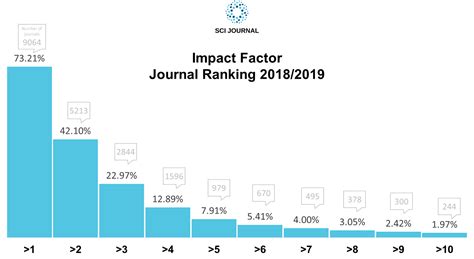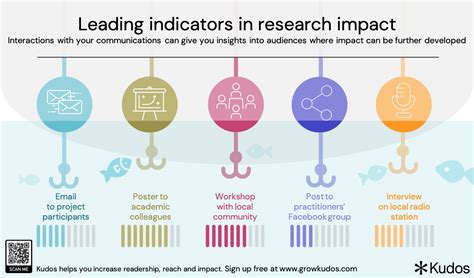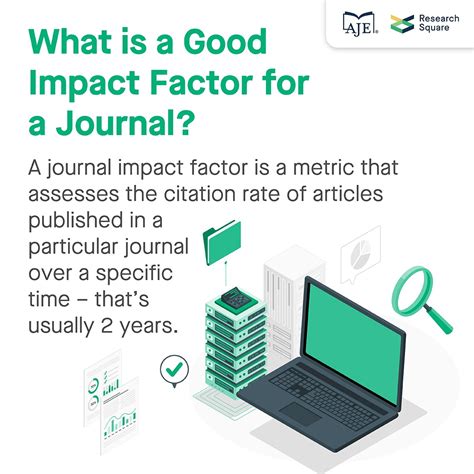Breaking News


Popular News


Learn about impact factor in science advances, measuring research impact, affecting factors, increasing impact, and using it wisely. Enhance your research influence. In the world of scientific research, the impact factor is a metric that holds a significant amount of weight. Understanding the impact factor and how it is determined is crucial for researchers and academics alike. In this blog post, we will delve into the concept of impact factor, explore how it is measured, examine the factors that can influence it, and discuss strategies for increasing it. We will also touch on the importance of using impact factor judiciously in the realm of scientific advancement. By the end of this post, you will have a comprehensive understanding of what impact factor is, its relevance in the scientific community, and how to navigate its implications effectively. Whether you are a seasoned researcher or just beginning your academic journey, this post will equip you with valuable insights into impact factor and its role in driving science forward.
Contents

Impact Factor is a measure used to evaluate the importance of a particular journal within its field. It is calculated based on the average number of citations received by articles published in the journal during a specific time period. This metric is often used to compare different journals and to determine the relative importance of a journal within its field.
For example, a journal with a high Impact Factor is considered to be more prestigious and influential than a journal with a lower Impact Factor. It is important to note, however, that Impact Factor should not be the sole measure of a journal’s quality, as it does not take into account the quality of individual articles or the research methodologies used.
Despite its limitations, Impact Factor remains a widely recognized and frequently used metric in the academic and scientific communities. It can be a useful tool for researchers when deciding where to submit their work and for institutions when evaluating the research output of their faculty.

Measuring Research Impact
Measuring the impact of research is a complex and multifaceted process that involves evaluating the influence and significance of scholarly work in various academic fields. It encompasses a range of factors, such as citation counts, journal metrics, and collaboration networks, that contribute to gauging the reach and significance of research findings in the scientific community.
One key method for measuring research impact is through the use of citation analysis, which involves tracking the number of times a particular research article has been cited by other scholars. This provides insight into the influence and relevance of the work within the academic community, as well as its potential to contribute to the advancement of knowledge in a given field.
Another approach to measuring research impact is through the use of journal metrics such as the impact factor, which provides a numerical representation of the average number of citations received by articles published in a particular journal. This metric can be used to assess the relative importance and influence of scholarly publications within a specific discipline, and is often used by researchers, funding agencies, and academic institutions to evaluate the quality and significance of scientific work.
| Factors | Description |
|---|---|
| Citation Counts | Tracking the number of times a research article has been cited by other scholars. |
| Journal Metrics | Numerical representation of the average number of citations received by articles published in a particular journal. |
| Collaboration Networks | Evaluating the extent to which researchers collaborate and exchange ideas with their peers. |
In addition to traditional citation-based methods, there are also emerging approaches to measuring research impact, such as the evaluation of collaboration networks and the use of alternative metrics (altmetrics) that capture the online attention and engagement with research outputs through social media, news articles, and public policy documents. These new methods provide additional insights into the broader societal impact and reach of scholarly work, and complement traditional measures of research impact.

Impact factor is a measure used to assess the quality of a journal. It is calculated by dividing the number of citations in the current year to items published in the two previous years by the total number of scholarly articles published in the same two years. However, several factors can affect the impact factor of a journal.
One of the major factors affecting impact factor is the frequency of publication. Journals that publish more frequently tend to have higher impact factors, as they have more opportunities for citation. Another factor is the field of study. Journals covering popular and rapidly evolving fields tend to have higher impact factors compared to those covering less popular and slower evolving fields.
Additionally, the reputation of the journal and the quality of its editorial process can also affect its impact factor. Journals with a strong reputation and rigorous editorial process are more likely to attract high-quality submissions and consequently, more citations.
Other factors affecting impact factor include the length and language of the articles, as well as the international reach of the journal. Journals that publish longer articles and in multiple languages, and have a global readership, are likely to have higher impact factors.

Increasing the impact factor of a journal is a key goal for many academic and scientific publishers. A higher impact factor can lead to increased visibility, citations, and prestige for the journal, as well as attracting high-quality submissions from authors. There are several strategies that journals can employ to improve their impact factor, including:
1. Publishing High-Quality Research: One of the most important factors in increasing a journal’s impact factor is the quality of the research it publishes. Journals should strive to publish groundbreaking and influential research that will attract attention from the scientific community and receive a large number of citations.
2. Encouraging Citations: Journals can actively encourage authors to cite articles from their journal in their own research. This can be done through editorial policies, providing clear guidelines for authors on citing previous research, and promoting articles on social media and other platforms to increase their visibility.
3. Collaborating with Other Journals and Organizations: Collaboration with other journals or scientific organizations can increase the visibility and impact of a journal. By partnering with other respected publications or organizations, a journal can reach a wider audience and attract more citations, ultimately increasing its impact factor.

When it comes to evaluating the impact of scientific journals, the impact factor is a commonly used metric. However, it’s important to use this measure wisely and understand its limitations.
Impact factor can be a useful tool for researchers looking to determine the prestige and influence of a particular journal. It is often used as a way to compare different journals within a specific field of study.
However, it’s crucial to remember that impact factor should not be the sole factor in determining the quality of a research article or journal. It’s essential to consider other factors such as the subject area, research methodology, and the relevance of the content.
Researchers should also be aware of the potential for manipulation of impact factor and the limitations of using this metric as the sole indicator of a journal’s quality.
